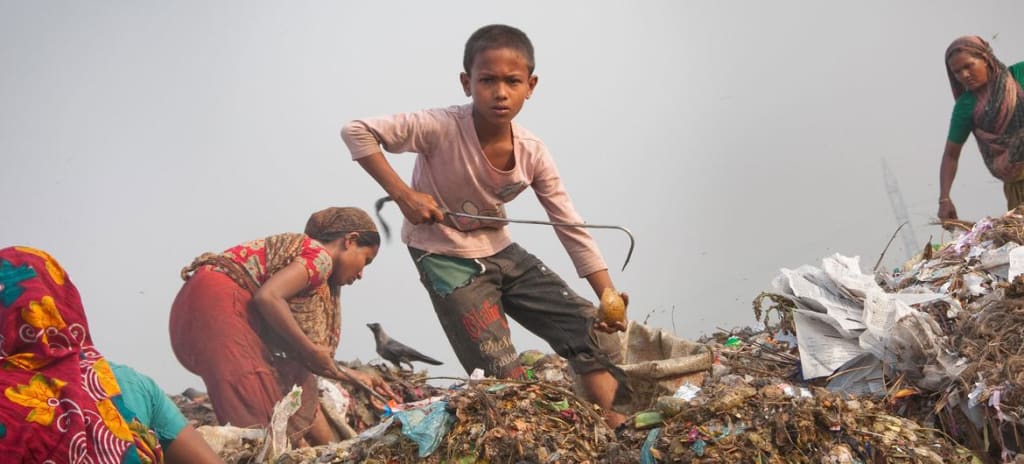Urgent Action Needed to Combat Child Labour
Promote Economic Development

Urgent Action Needed to Combat Child Labour and Promote Economic Development
Introduction:
Child labour remains a pressing global concern, with approximately 160 million children, accounting for nearly one in every ten children, engaged in work instead of attending school. On the occasion of World Day against Child Labour, the International Labour Organization (ILO) shed light on this alarming issue, emphasizing the urgent need for effective solutions. This article examines the causes and consequences of child labour, highlights regional disparities, and emphasizes the crucial role of decent work and social protection in eradicating this practice and promoting sustainable economic development.
The Root Causes of Child Labour:
Child labour is not solely a result of neglectful or irresponsible parents; rather, it stems from a lack of social justice. To effectively combat child labour, it is imperative to focus on tackling the root causes. According to Guy Ryder, Director-General of the ILO, promoting decent work opportunities for adults, enabling them to provide for their families, and strengthening social protection systems are the most effective solutions. Additionally, ending forced labour, creating safe and healthy workplaces, empowering workers to organize and advocate for their rights, and eliminating discrimination are crucial steps towards eradicating child labour, especially among the most marginalized populations.
Disparities in Sub-Saharan Africa:
The prevalence of child labour in sub-Saharan Africa is particularly staggering, with more than half of the global child labour population, around 86.6 million children, residing in this region. Alarmingly, close to one in four children in sub-Saharan Africa engages in child labour. The United Nations Children's Fund (UNICEF) and the ILO jointly conducted research highlighting this alarming trend. To effectively combat child labour in sub-Saharan Africa, concerted efforts must be made to address the underlying causes, improve social protection systems, and create decent work opportunities.
Agriculture as the Primary Sector of Child Labour:
Agriculture represents the primary sector where child labour is prevalent, both in Africa and globally. The Food and Agriculture Organization (FAO) has reported that 70 percent of child labour occurs in the agricultural sector, with the number of children engaged in agricultural work on the rise. FAO emphasizes that child labour is three times more common among rural smallholders in farming, fisheries, and forestry compared to urban areas. While many children assist their parents in agricultural activities for family consumption, a significant number are exposed to hazardous conditions that jeopardize their health and educational opportunities.
Promoting Childhood and Economic Development:
To safeguard the rights of children and promote their well-being, it is essential to address child labour comprehensively, from local to global levels. The FAO underscores the importance of intervening throughout the value chains, ensuring that children have a childhood free from exploitation. Collaborative efforts involving governments, international organizations, and civil society are crucial in combating child labour effectively.
The FAO, in partnership with the ILO and the European Union, is actively working to eliminate child labour in key sectors such as cocoa, cotton, and coffee. Initiatives in countries like Burkina Faso, Mali, and Pakistan aim to improve households' livelihoods, empower women economically, and raise awareness about child labour. Additionally, the FAO has developed a framework to guide policymakers in addressing child labour in agriculture and has provided support to countries like Uganda and Cabo Verde in developing prevention policies.
Conclusion:
The persistence of child labour worldwide demands urgent action to protect the rights and well-being of children while fostering sustainable economic development. Eradicating child labour requires addressing the root causes, such as social injustice and lack of decent work opportunities for adults, as well as providing social protection systems. With a particular focus on the agricultural sector, efforts must be made to ensure safe and healthy working conditions and protect children from exploitation. By collaborating at local, regional, and global
About the Creator
Khushtab Ali
I am a versatile professional with expertise in Mind Sciences, content writing,ghost writing.I bring a unique blend of analytical skills,creativity, and problem-solving abilities to my work.
I am fluent in English,Urdu, Pushto, and Serieki





Comments
There are no comments for this story
Be the first to respond and start the conversation.